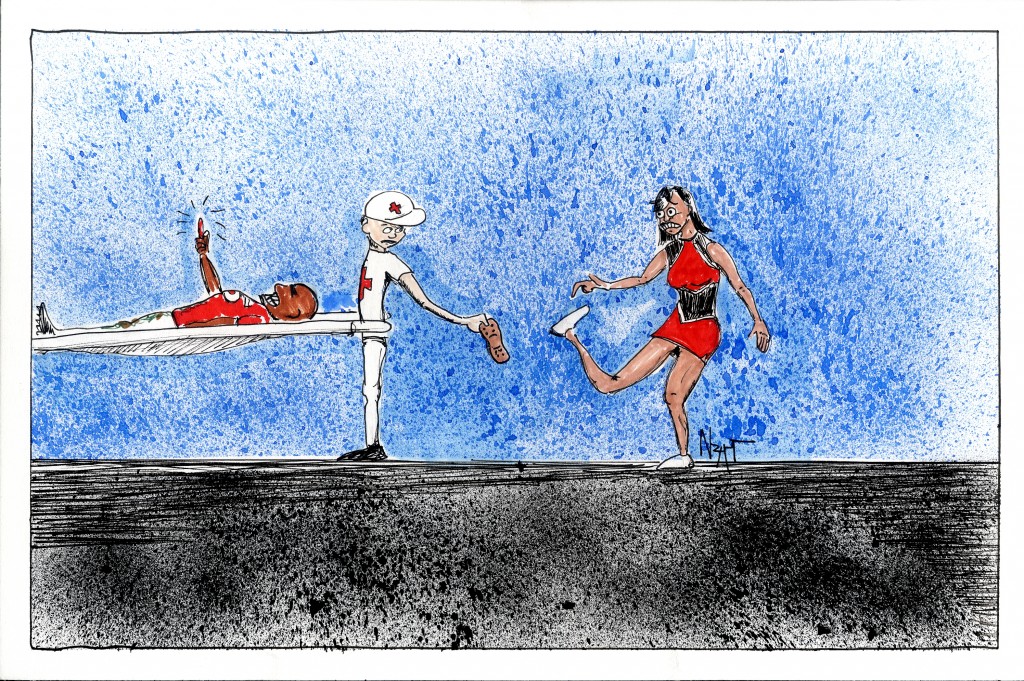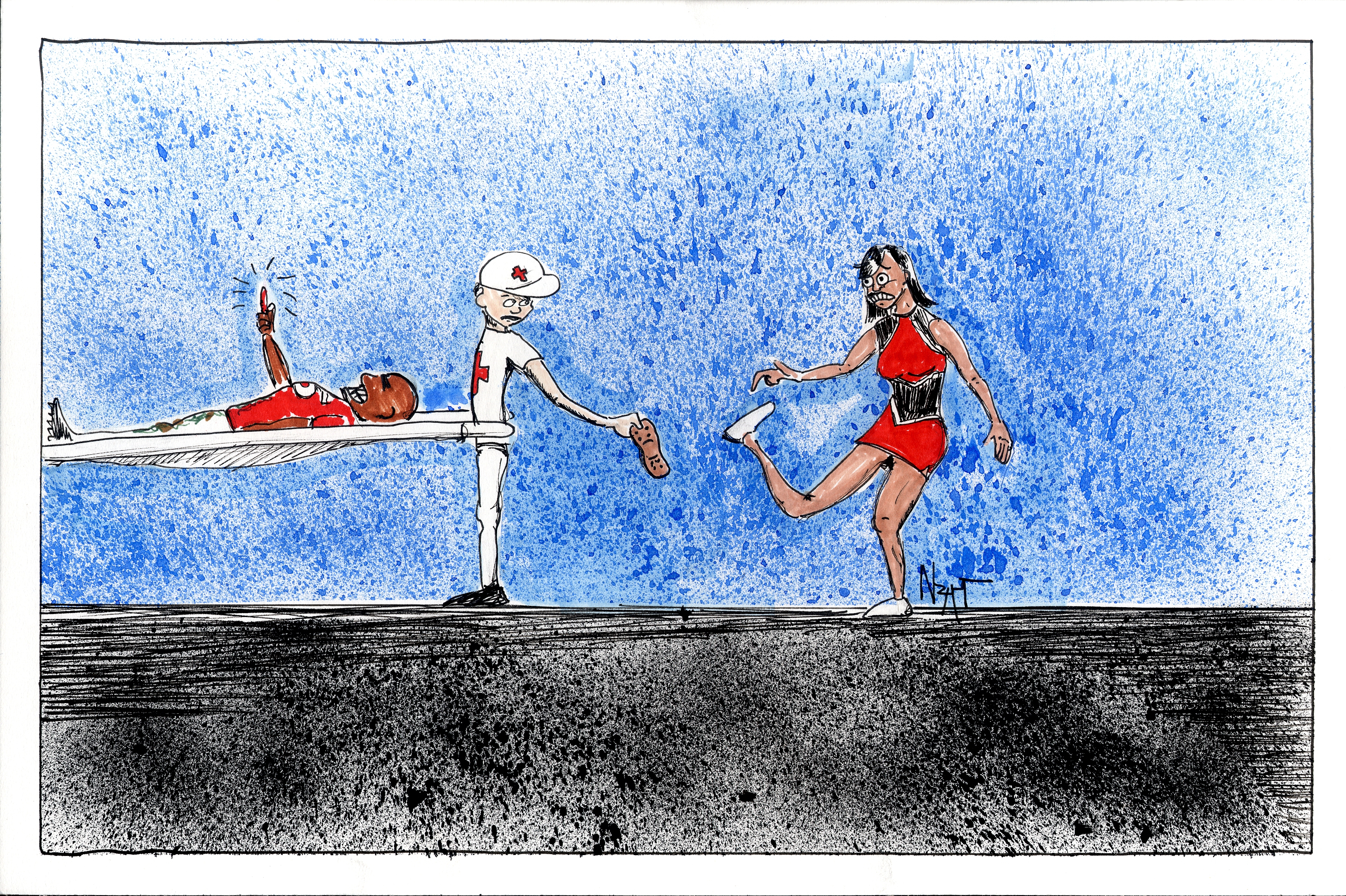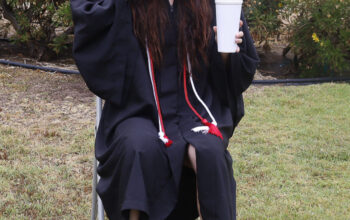
Under the California Community College Athletic Association bylaws and athletic training standards, cheerleaders are not regarded as collegiate athletes and are not eligible to get the same medical treatment given to players covered by these policies.
CCCAA designated athletes are awarded these benefits, while cheerleaders who do acrobatic stunts are not afforded the same treatment because it is not considered a sport.
According to a report published by the American Academy of Pediatrics, cheerleading accounted for 70.8 percent of catastrophic injuries sustained by female collegiate athletes between 1982 and 2009.
In addition, cheerleading has the second worst injury rate out of all sports in the US according to the United States Sports Academy.
The treatment given to athletes include using special heat pads, whirlpool machines and physical therapy. These tools and techniques used by athletic trainers around the state help keep athletes in shape and also allow people to save money by not having to go to a private clinic for treatment that may cost thousands of dollars.
All “sports athletes” receive these benefits at no cost to them from trainers on campus, but cheerleaders do not as they are not recognized as athletes.
Cheerleaders only receive treatment from Pierce athletic trainers when there is an emergency at an event.
Why should the cheerleaders have to wait for an extreme injury occurs to get treatment? It makes the schools around the state more liable if an injury such as a broken leg or a dislocation were to occur.
Despite these setbacks, the Pierce College cheerleading squad has been successful.
Last spring the cheerleaders won the Xtreme Spirit SoCal International Championship. This was while training three times per week in the North Gym with limited supplies that included little amounts of pre-wrap and tape for ankles, which came out of the players’ pockets.
It is time to take care of the people who put themselves at risk in support of our teams. CCCAA president Carlyle Carter needs recognize these men and women as athletes across the state and put cheerleading under the same rules and regulations and allow the team to receive the same medical treatment as other athletes receive.



